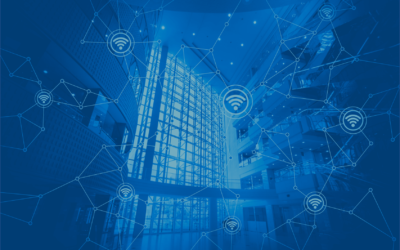Why Let Device Constraints Constrain Your Business Potential?
19
October 2020
by Eliav Gnessin
Solving with Firmware Innovation
Embedded computing devices deployed within the Internet of Things (IoT) have, for years, been challenged with the ability to compute given minimal resources.
Constraints include memory and processing capabilities and the low-power radio standards utilized as network interfaces.
Product companies and Solution providers need inexpensive computing devices at scale – not just a few dozen, but tens of thousands and even hundreds of thousands that are small, affordable, and reliable, especially for distributed implementations (for example, an entire smart city using controlled LED lighting).
The ability to network embedded devices opens up endless opportunities to develop new applications in homes, buildings, and public spaces. The value of the IoT is found in new computing services that integrate existing software services already available via the Internet with the control and data gathering capabilities of embedded devices.
Technology improvements following Moore’s law (the value of the network is based on the number of endpoints on the network) are making embedded devices more economical, smaller and more energy-efficient but not necessarily more powerful. Mass adoption equals mass production, which has contributed greatly to the growth of the IoT and Industrial IoT.
The challenge today, however, are expectations for edge devices to do a lot more work than they have previously done, and that takes more CPU power, memory, and storage capacity.
The rapid advancement and roll out of 5G wireless IoT services are exacerbating the challenge while also opening up new innovation opportunities – the networks will be amazing, but what about the edge? How do we create devices that are both powerful and resource-efficient, rugged, and affordable?
Embedded devices used in the IoT need to possess computational capabilities for the task they must perform, security, and networking abilities allowing integration with the Internet. To minimize product costs, IoT devices are to be equipped with low-power, constrained resources, combined with a production-grade, low-footprint IoT client that allows utilizing the full capabilities of the chipset.
Similar Blogs
Will COVID-19 Accelerate the Adoption of Connected Field Service?
Beyond the massive impact the global pandemic and related Work from Home mandates are having on organizations whose offices have been closed for months – and who have turned to virtual productivity platforms to keep operations moving – consider the impact on field service, and the technicians who go out into the field to fix problems or simply provide preventative or regular maintenance.
Do We Really Need Another IoT Gateway?
As the Internet of Things expands, companies find themselves faced with the challenge of integrating a multitude of devices and protocols, with varying power and connectivity requirements. IoT Gateways are vital components in establishing a robust IoT environment and for achieving computational power in edge computing.
Connected Field Service Leads To Brilliant Customer Experiences
Customer Experience is one of the most influential factors in stimulating customer loyalty and retention. Market research studies reveal that it costs five times as much to attract a new customer as it does to keep an existing customer satisfied.



